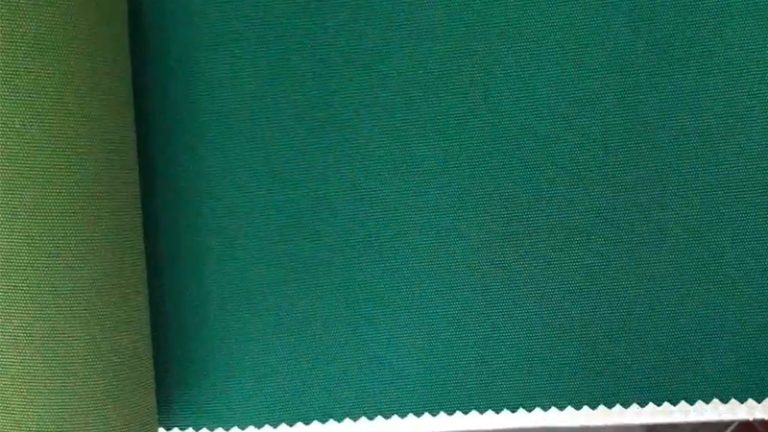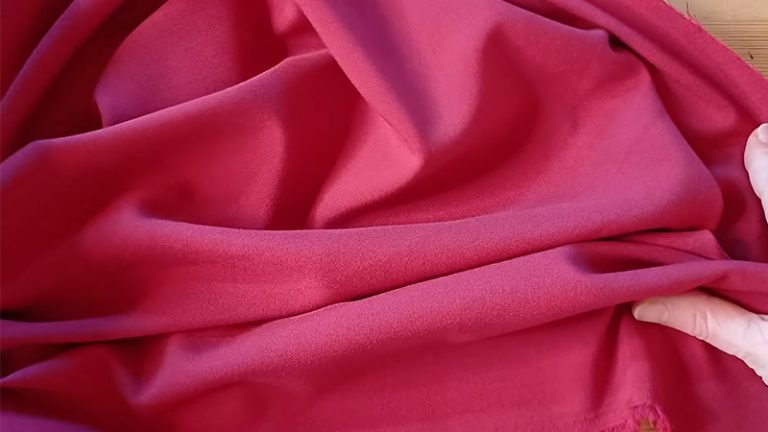
More Than Just a Medical Staple When you hear “gauze fabric,” your mind might immediately picture first aid kits and medical bandages, a reliable staple in healthcare.
However, this versatile textile is far more expansive in its utility. Beyond its critical role in the medical community, gauze has gracefully entered the worlds of fashion, home décor, and even outdoor equipment, offering a unique blend of comfort and functionality.
From lightweight summer dresses and shirts to sturdy tablecloths and camping tents, its presence is felt across numerous industries.
What is Gauze Fabric? Its Unique Characteristics
A Loosely Woven Textile At its core, gauze fabric is a thin, translucent, lightweight fabric characterized by its open, loose weave. Unlike conventional textiles with tightly packed threads, gauze features an intentional spacing between its yarns, creating a distinctive mesh effect.
This construction is typically achieved using breathable materials such as cotton, rayon, or various fiber blends.
Breathability and Airy Feel
The defining feature of gauze fabric is its open weave, which allows for significantly more space between individual threads compared to most other fabrics.
This unique structure imparts several key advantages:
- Exceptional Breathability: The airy composition promotes superior air circulation, making it incredibly comfortable, especially in warmer climates.
- Lightweight and Airy Feel: Its delicate structure contributes to its lightness, offering a soft, flowing drape that is highly sought after in fashion.
- Translucency: The open mesh gives gauze a semi-transparent quality, often utilized in design for its ethereal aesthetic.
Despite being generally less durable than some heavier fabrics, its unique properties secure its wide range of applications across clothing, design, and healthcare.
Types of Gauze Textiles

The world of gauze fabric is rich with variety, offering a wide selection, each with distinct characteristics and specific applications. These types can broadly be categorized by their fiber composition and specific uses.
Natural Fiber Gauzes:
Comfort and Absorbency Gauzes derived from natural fibers are celebrated for their comfort, absorbency, and often, their eco-friendliness.
- Cotton Gauze: Produced from pure cotton, this type is known for its delicate feel against the skin and excellent absorbent characteristics. Its natural appearance also makes it a popular choice for home décor, in addition to its primary use in bandages.
- Muslin: Woven from cotton or linen, muslin is a lightweight and adaptable fabric. Its breathability makes it a favorite for summer apparel, while its inherent durability also lends it to applications like sturdy tablecloths and curtains.
- Cheesecloth: Primarily made from cotton and linen, cheesecloth is widely recognized for its utility in the kitchen for straining purposes. In medical settings, it serves effectively as material for bandages and masks.
- Bamboo Gauze: Featuring gentle and absorbent qualities derived from bamboo fibers, bamboo gauze is an excellent option for clothing materials. The healthcare industry values it for its natural antimicrobial properties, making it useful in various medical contexts.
- Hemp Gauze: Crafted from hemp fibers, this gauze boasts a reputation for toughness and strength. Its durability makes it ideal for clothing designed to withstand wear and tear, and its robustness ensures secure bandages and dressings in hospitals.
Synthetic & Specialized Gauzes:
Durability and Performance These types often incorporate synthetic fibers or specialized weaves to enhance durability, strength, or specific performance characteristics.
- Rayon Gauze: This fabric is known for its regenerated cellulose composition, providing a silky-smooth feel. This luxurious touch makes it a designer’s favorite for creating flowing dresses and skirts.
- Surgical Gauze: Primarily designed for medical use, surgical gauze is typically made from cotton or linen, ensuring softness and high absorbency for wound care and surgical procedures. The addition of synthetic fibers like polyester can enhance its strength and durability, crucial for demanding medical applications.
- Polyester Gauze: A synthetic variant, polyester gauze is highly regarded for its exceptional durability and top-notch weather resistance. These properties make it an ideal material for outdoor equipment such as camping tents and sailcloth.
- Leno Gauze: This twill weave exhibits both strength and lightness, similar to polyester gauze. It is frequently found in outdoor gear, including sails and tents, where resilience and low weight are paramount.
- Viscose Gauze: Also derived from regenerated cellulose, viscose gauze possesses a fine, silky texture and excellent breathability. It is favored in fashion for its beautiful drape and the vibrancy it achieves when dyed. Its hypoallergenic nature also makes it valuable in sensitive medical environments.
Layered Gauzes:
Enhanced Texture and Application Some gauze fabrics are constructed with multiple layers to create distinct textures and enhance utility.
- Double Gauze Fabric: This type of gauze is made from pure cotton and is predominantly used in fashion. Often mistaken for muslin due to similar textures, double gauze distinguishes itself by being composed of multiple layers of cloth, whereas muslin is typically a single layer.
Gauze Manufacturing Process

The transformation of raw fibers into the versatile gauze fabric we know today involves a series of methodical and precise steps. Understanding this manufacturing process provides deeper insight into the fabric’s unique properties.
Yarn Preparation:
The initial stage involves taking raw fibers and thoroughly cleaning them through a mechanical process. Once cleaned, these fibers are meticulously spun into threads, which form the foundational material for the fabric.
This procedure is critical for ensuring that the thread is consistently clean and uniform, which is essential for successful weaving.
Weaving Process:
Following yarn preparation, the threads are loaded onto a specialized machine known as a Leno loom. While a plain weave involves one warp yarn behaving uniformly, the Leno loom distinguishes itself by having a second warp yarn twist around each weft yarn. This unique twisting action is what creates the characteristic open mesh effect of gauze fabric.
Bleaching:
The fabric’s journey doesn’t conclude immediately after weaving. It undergoes a bleaching process to enhance its color and overall appearance, ensuring a clean and consistent aesthetic.
Finishing:
Finally, manufacturers apply various finishing touches to the fabric. These processes are designed to improve its texture, enhance its hand-feel, and prepare it for its diverse range of intended applications across different industries.
Applications of Gauze Fabrics
Gauze fabric’s inherent versatility is powerfully demonstrated by its widespread applications across numerous sectors. Initially recognized for its medical utility, its attributes quickly propelled it into the realms of fashion and home décor.
Medical Use
In the medical field, gauze fabric is indispensable, primarily used in bandages and dressings. Its open weave allows air to circulate freely around wounds, a crucial factor in supporting the healing process.
Its softness, absorbency, and breathability make it a preferred choice for protecting and cushioning injuries.
Fashion and Clothing
The fashion industry regularly incorporates gauze fabric, particularly in the production of clothing. Its lightweight nature and excellent draping qualities make it ideal for creating:
- Dresses and Blouses: Offering a flowing, airy silhouette.
- Summer Clothing: Its breathability provides comfort in warm weather.
- Layered Apparel: Double gauze, in particular, adds texture and subtle volume to garments.
Home Decor
Gauze fabric’s semi-transparency and airy feel lend themselves beautifully to home décor applications. It is frequently utilized in the design of window treatments, where it can create light and breezy curtains, imparting an open and serene atmosphere to rooms. Its natural aesthetic, especially in cotton variants, also garners interest for other decorative purposes.
How to Care for Gauze Fabric

To ensure the longevity and maintain the delicate characteristics of gauze fabric, a few simple yet crucial care steps are advised:
Gentle Washing:
Always wash gauze fabric gently in cold water. This helps preserve its shape and size, preventing shrinkage or stretching.
Natural Drying:
After washing, it is best to hang the fabric for natural air drying. Avoid machine drying, which can be too harsh for its delicate weave.
Ironing (or Lack Thereof):
Ironing is generally not advised for gauze fabric. If wrinkles are a concern, a light steam or a fabric freshening spray can effectively smooth out the fabric without damaging its texture.
Conclusion
Gauze fabric stands as a truly unique textile, celebrated for its lightweight nature, breathability, and exceptional versatility.
Its journey from raw fibers through meticulous yarn preparation, specialized weaving on a Leno loom, bleaching, and careful finishing results in a material with broad utility across diverse industries.
From its critical role in the medical field, supporting wound healing with optimal air circulation, to its aesthetic contributions in fashion for flowing garments and in home décor for airy window treatments, gauze fabric’s adaptability is undeniable.
Moreover, its frequent composition from 100% natural fibers like cotton, hemp, or bamboo, underscores its appeal as an eco-friendly and sustainable choice.



